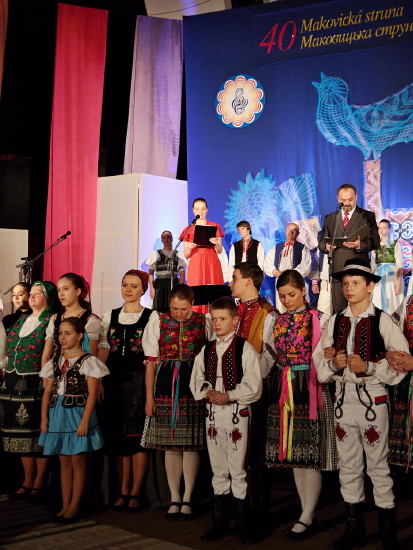Slovak-Ukrainian relations in the Prešov region
Slovak-Ukrainian relations in the Prešov region. Because of geographic proximity Slovak-Ukrainian relations have historically been most intense south of the Carpathian Mountains, in particular in the Prešov region. In that region Slovak-Ukrainian linguistic relations are closest, since East Slovak dialects (Šariš, Zemplín) form part of a linguistic transition zone with Ukrainian Transcarpathian dialects and Ukrainian dialects of the Prešov region.
For centuries Slovaks and Ukrainians south of the Carpathian Mountains shared the same political, social, and cultural fate within the Kingdom of Hungary. In an attempt to improve their status, Slovaks and Ukrainians of the Prešov region worked together closely during each group's 19th-century national revival. Adolf Dobriansky was elected to the Hungarian parliament from a Slovak-inhabited district and was a founding member of Slovakia's first cultural organization, the Matica Slovenska (1863). Analogously, four Slovaks were among the founding members of the first Ruthenian (Ukrainian) cultural organization, the Prešov Literary Society, founded by the national leader Oleksander Dukhnovych in 1850.
Relations between the two national groups have not been completely harmonious in the 20th century. Throughout the whole interwar period Ukrainians living in the historical counties of Spiš (Szepes), Šariš (Sáros), and Zemplín (Zemplén)—the so-called Prešov region—remained under a Slovak administration. All efforts to unite the Prešov region with Subcarpathian Ruthenia during the short-lived era of post- Munich Agreement federal Czechoslovakia were blocked by the Slovak autonomist government; then, under the Slovak state during the Second World War, Ukrainians experienced various degrees of discrimination.
Since the establishment of communist rule in Czechoslovakia in 1948, Slovak-Ukrainian relations in the Prešov region have varied. The Czechoslovak and later Slovak Communist authorities have provided educational and cultural facilities for the national minorities living within their borders.
Some antagonism between the two groups has been evident also within the Greek Catholic church (forcibly liquidated in 1950, restored in 1968). Traditionally headed by bishops of Ukrainian ethnic background, from 1969 the church was headed by a Slovak administrator (J. Hirka), who in 1991 was consecrated bishop. He allowed services in the vast majority of churches to switch from Church Slavonic to Slovak as the liturgical language. The efforts to Slovakize the Greek Catholic church and to claim that all ‘Rusnaks’ living in Slovakia are by ethnicity Slovak are strongly supported by Slovak Catholic circles in the West, particularly Canada, where a distinct Slovak Byzantine (Greek Catholic) church was established in 1981.
Since the Velvet Revolution of 1989, which brought profound political, social, and economic changes to Czechoslovakia, and later resulted in the formation of independent Slovakia, Slovak-Ukrainian relations in the Prešov region have at times been difficult. The local Ukrainian intelligentsia is, in particular, critical of several decisions by the Slovak government to support that portion of the Ukrainian population which promotes the idea that Ruthenians (Rusyns) form a separate nationality. Whereas Slovakia has welcomed Ukraine's regained independence, relations between the two states have at times been strained because of differing interpretations regarding the divisions (Ruthenian versus Ukrainian) among the Ukrainians in the Prešov region.
BIBLIOGRAPHY
Hnatiuk, Volodymyr. ‘Slovaky chy rusyny: Prychynok do vyiasnennia sporu pro natsional'nist' zakhidnykh rusyniv,’ Zapysky Naukovoho tovarystva im. Shevchenka, 42, no.4 (1901)
Húsek, Jan. Národopisná hranice mezi Slováky a Karpatorusy (Bratislava 1925)
Mol'nar, Mykhailo. Slovaky i ukraïntsi (Bratislava and Prešov 1965)
Paul Robert Magocsi
[This article originally appeared in the Encyclopedia of Ukraine, vol. 4 (1993).]

